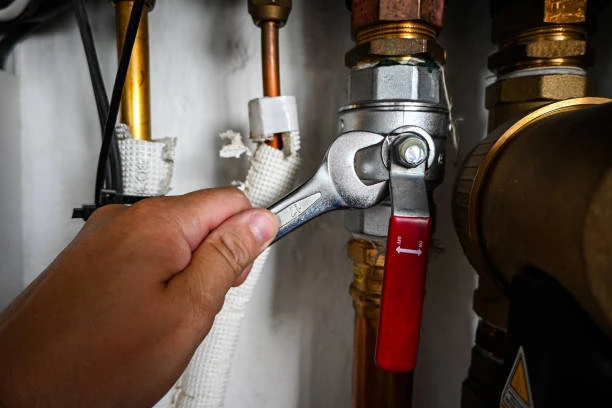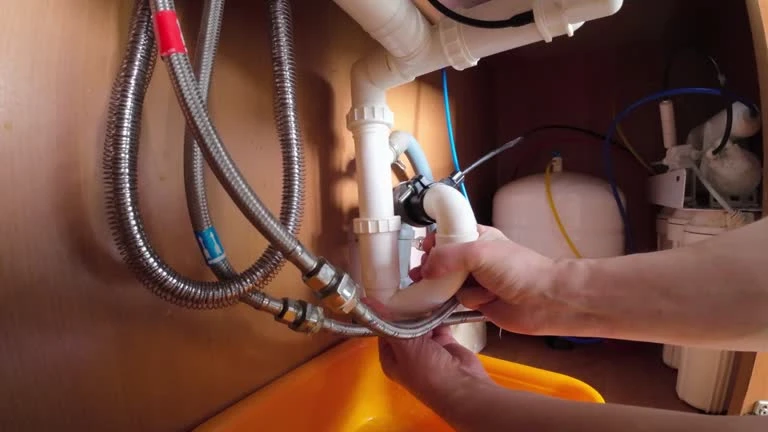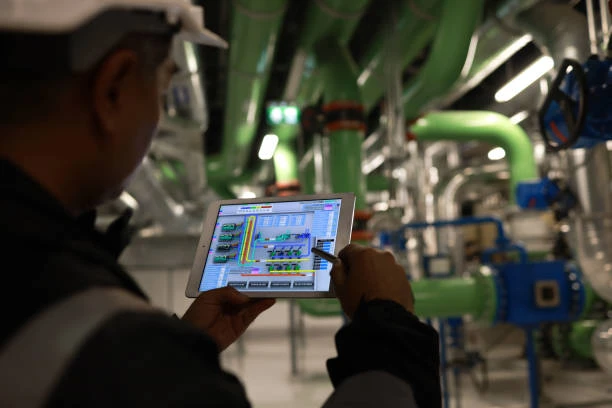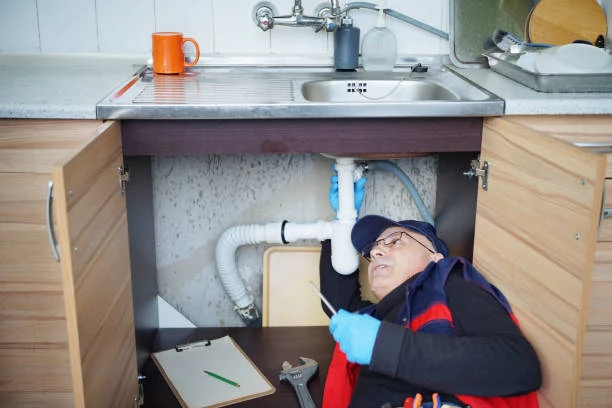A Big Collection of Copper Faucet Installation Tips
Installing copper faucets properly can significantly improve the efficiency and lifespan of any plumbing system. Whether you’re working on a residential renovation, a commercial installation, or an industrial setup, using the right techniques and ABS faucet fittings can make all the difference. Copper faucets are known for their durability, resistance to corrosion, and classic appearance. However, correct installation is key to ensuring optimal performance and avoiding costly issues later on.
This article shares a comprehensive collection of tips for copper faucet installation. It answers common questions, explains the essential characteristics of valves, reviews the typical uses of copper in plumbing systems, offers a buyer’s guide, provides detailed installation steps, compares copper valves to other materials, and introduces IFAN’s internationally recognised plumbing standards.
Frequently Asked Questions (FAQ)
1. What is an ABS faucet and how does it relate to copper fittings?
An ABS faucet is made from acrylonitrile butadiene styrene, a type of durable plastic commonly used in plumbing fixtures. While ABS is lightweight and resistant to impact, copper faucet fittings often offer better long-term performance and are more suitable for high-pressure systems. In some installations, ABS faucets may be paired with copper valves or fittings for better compatibility and strength.
2. Why should I choose copper for faucet fittings?
Copper is a time-tested material known for its resistance to corrosion, heat, and bacterial growth. It ensures a long-lasting seal and reliable water flow, especially in high-use environments. Copper also connects well with both plastic (like ABS) and metal piping systems.
3. Are copper faucets easy to install on my own?
Yes, if you have the right tools and follow the correct steps. Most copper faucet installations are manageable for people with basic DIY skills. However, attention to detail is important to avoid leaks or misalignments.
4. What tools do I need to install copper faucet fittings?
Typical tools include an adjustable spanner, plumber’s tape (PTFE), pipe cutter, pipe wrench, sealant, and possibly a blowtorch if soldering is required. Always make sure the fittings are compatible with your system, especially if mixing copper with ABS.
5. Do copper fittings work with plastic pipes like ABS?
Yes, but they require specific adaptors or transition fittings. For example, compression or threaded connections may be used to link copper fittings to ABS faucets or piping. Always check manufacturer recommendations to ensure a secure connection.
Basic Valve Definition and Key Features
A valve is a mechanical device used to control the flow of water or gas within a piping system. In faucet installations, valves play a vital role in managing water delivery and temperature control.
Key features of copper valves include:
High corrosion resistance: They do not rust or degrade when exposed to moisture over time.
Thermal resilience: Copper can handle extreme temperatures without deforming.
Antibacterial properties: Copper inhibits the growth of bacteria and other harmful microbes.
Structural strength: They withstand high pressure, making them ideal for both hot and cold water systems.
Compatibility: They integrate easily with ABS faucet systems and other plastic or metal pipes using the appropriate connectors.
These features make copper valves a trusted choice in both residential and commercial plumbing.
Common Uses and Industry Applications
Copper faucet fittings and valves are versatile components with a broad range of applications. Their dependable performance and long service life make them a popular option in various industries.
Common uses include:
Home bathrooms and kitchens – For daily use in sink and basin setups.
Commercial buildings – Offices, hotels, and public restrooms use copper for consistent reliability.
Medical and healthcare facilities – The antibacterial nature of copper is ideal in hospitals and clinics.
Food processing environments – Where cleanliness and temperature control are crucial.
Industrial facilities – Especially in high-temperature or chemical exposure areas.
Copper valves can also be paired with ABS faucet fixtures in cost-sensitive projects, offering a balance between durability and affordability.
Buyer’s Guide: How to Choose the Right Faucet and Fittings
Choosing the correct faucet and fittings is important for both performance and aesthetics. Here’s what to consider:
1. Material Compatibility
Ensure the faucet body and fittings are compatible. If using an ABS faucet, check that copper valves include the necessary transition fittings or adaptors to form a watertight connection.
2. Surface Finish
Copper faucets are available in various finishes, such as brushed, polished, or antique. The choice depends on design preference, durability, and maintenance needs.
3. Valve Type
Look for ceramic disc valves for superior performance. These valves offer smoother operation and less wear than rubber washers or traditional ball valves.
4. Certifications and Standards
Always choose products certified to international standards like ISO 21003 or ASTM F1974. These ensure product safety, performance, and environmental compliance.
5. Pipe Size and Connection Type
Confirm that the fitting size matches your pipe diameter and type (ABS, PEX, copper, etc.). Use transition couplings when joining different materials.
6. Supplier Reputation
Buy from reputable manufacturers or distributors like IFAN. They offer reliable technical documentation, sample access, and responsive customer service.
Installation Tips for Copper Faucets and Fittings
Proper installation guarantees leak-free operation and long-term reliability. Follow these practical tips for installing copper faucets and their fittings:
1. Turn Off the Water Supply
Before beginning any work, close the main water valve to prevent accidental flooding.
2. Prepare Your Tools and Workspace
Clean the area and gather necessary tools—adjustable wrench, sealant tape, cutting tools, and connectors. Ensure all parts, including the ABS faucet (if applicable), are ready.
3. Mount the Faucet Securely
Place the faucet through the mounting hole and secure it with the included hardware. Use a basin wrench to reach tight areas underneath the sink.
4. Connect Hot and Cold Water Lines
Identify the hot and cold inlets. Use PTFE tape on threads to prevent leaks, and tighten fittings carefully without over-tightening, which may damage threads.
5. Test for Leaks and Functionality
Once all connections are made, reopen the main valve slowly and inspect for leaks. Test the faucet’s temperature control and pressure.
6. Seal Gaps and Finalise Installation
Apply silicone sealant around the base to prevent water ingress. Re-check alignment and valve performance to ensure smooth operation.
Copper Valves vs Other Materials: A Comparison Table
Below is a simple comparison of copper valves versus other common materials like ABS, brass, and stainless steel.
| Feature | Copper Valves | ABS Valves (Plastic) | Brass Valves | Stainless Steel Valves |
|---|---|---|---|---|
| Durability | Excellent | Moderate | Good | Excellent |
| Temperature Resistance | High | Low to Medium | Medium | High |
| Corrosion Resistance | High | Moderate | Medium | High |
| Hygiene | Antibacterial | Not antibacterial | Limited | Not antibacterial |
| Aesthetic Appeal | Natural patina develops | Limited design options | Traditional look | Sleek and modern |
| Cost | Moderate | Low | Moderate | High |
| Environmental Impact | Recyclable | Partially recyclable | Recyclable | Recyclable |
Copper valves strike a balance between performance, hygiene, and visual appeal. ABS faucets offer a budget-friendly option, but require careful pairing with copper to avoid connection issues.
Conclusion
Installing copper faucets with the right fittings provides lasting performance and a refined look. When combined correctly, ABS faucets and copper fittings can offer both affordability and durability. Understanding the differences in materials, choosing certified components, and following a proper installation process are the keys to achieving leak-free, efficient results.
Whether you’re upgrading a home bathroom, fitting out a commercial washroom, or managing an industrial facility, copper faucet systems—when installed correctly—deliver reliable, high-quality water flow and control. Make sure to use the correct tools, transition fittings, and certified parts to complete your project with confidence.
Contact IFAN for Catalogues and Samples
Need technical documents, catalogues, or sample products? Reach out to IFAN today.
For more information,pls visit our webside https://waterpipefitting.com/
Pls Mailto: [email protected]
Whatsapp: +86 15088288323
Our team responds quickly and provides professional support for all your pipeline and faucet fitting needs.
IFAN International Standard
IFAN piping systems comply with a wide range of international standards to ensure high quality and performance. These include:
ASTM F1974 – Multilayer piping systems
ASTM F1281 – Specifications for plastic and aluminium composite pipes
CSA B137 – Canadian plumbing application standards
DIN 16836 – German technical piping specifications
GB18997 – Chinese plumbing system compliance
ISO 21003 – International standard for multilayer piping systems in hot and cold water installations
This comprehensive certification scope underscores IFAN’s dedication to product quality, international compliance, and customer satisfaction.














Recent Comments